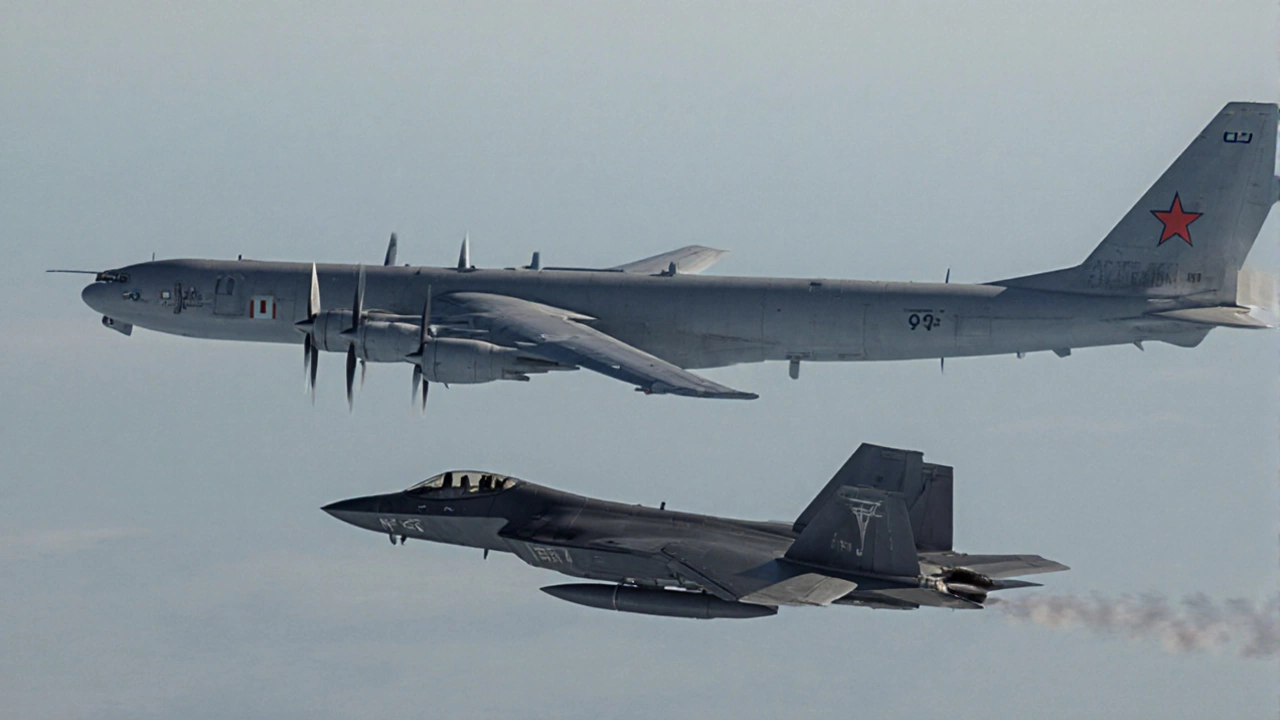For the fourth time in just seven days, U.S. Air Force fighters have been sent to flank a Russian aircraft cruising near Alaska's air defense identification zone (ADIZ). The object, identified by defense officials as a high‑ altitude reconnaissance platform, has not crossed into sovereign U.S. or Canadian airspace, but its persistent presence keeps NORAD on high alert.
What’s really happening over the Bering Sea?
On September 24, 2025, the North American Aerospace Defense Command (NORAD) intercepted a pair of Russian Tu‑95 strategic bombers and a squadron of Su‑35 fighter jets that skimmed the Alaskan coastline. At the time, officials described the sortie as "routine" Russian activity within the ADIZ, emphasizing that the aircraft remained in international waters.
Since that encounter, three additional scrambles have been logged, each involving F‑15 or F‑22 fighters that climbed to intercept and visually identify the intruding aircraft. The Russian plane—believed to be a modified Ilyushin Il‑20 ELINT platform—flies at altitudes above 40,000 feet, using sophisticated sensors to gather signals over the Pacific.
Military analysts note that while the incursions are not illegal, they serve a clear purpose: testing the speed and readiness of North American air defenses. "Every time a Russian ship or plane brushes our ADIZ, we get a chance to measure our response times," said a senior NORAD spokesperson who asked to remain anonymous.
- All four incidents occurred within a 300‑mile radius of the Aleutian Islands.
- No Russian aircraft entered U.S. or Canadian sovereign airspace.
- Fighter response times averaged under five minutes from scramble to visual contact.
- Russian officials claim the flights are purely for "data collection" in international airspace.
Washington has lodged formal diplomatic protests after each episode, urging Moscow to respect the ADIZ and reduce provocative flights. Moscow, however, insists the movements are consistent with international law and part of standard intelligence‑gathering missions.
For now, the skies over Alaska remain a front‑line rehearsal ground, where U.S. pilots keep their skills sharp and policymakers watch closely to gauge whether these "regular" Russian activities could evolve into something more aggressive.
Russian spy plane sightings are likely to continue as both powers fine‑tune their aerial posturing, turning the remote Bering Sea into a subtle but persistent theater of strategic signaling.
